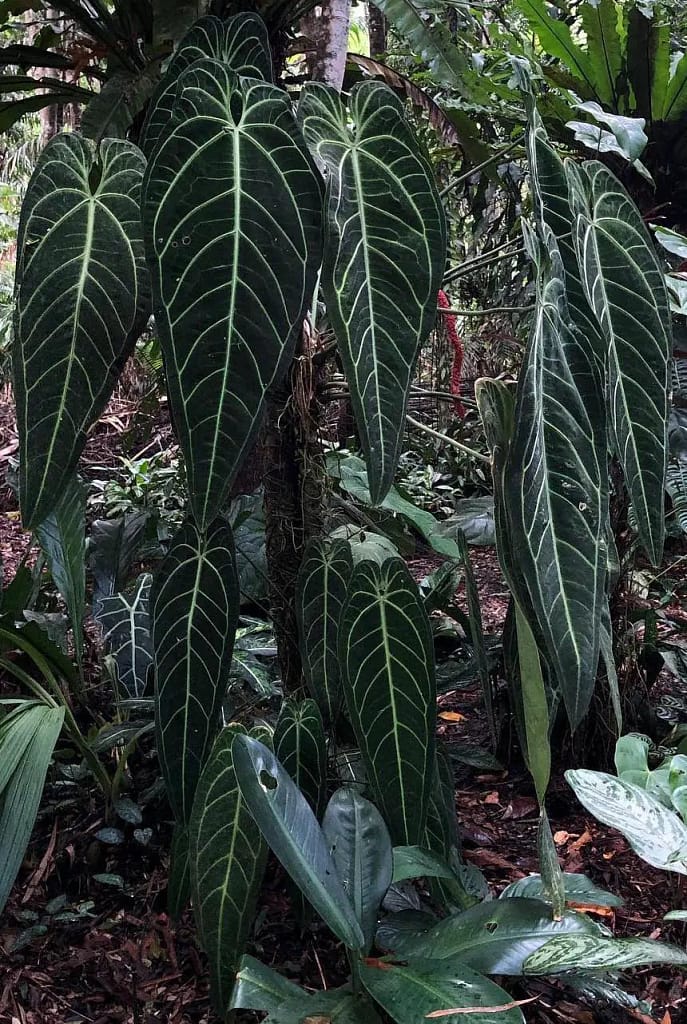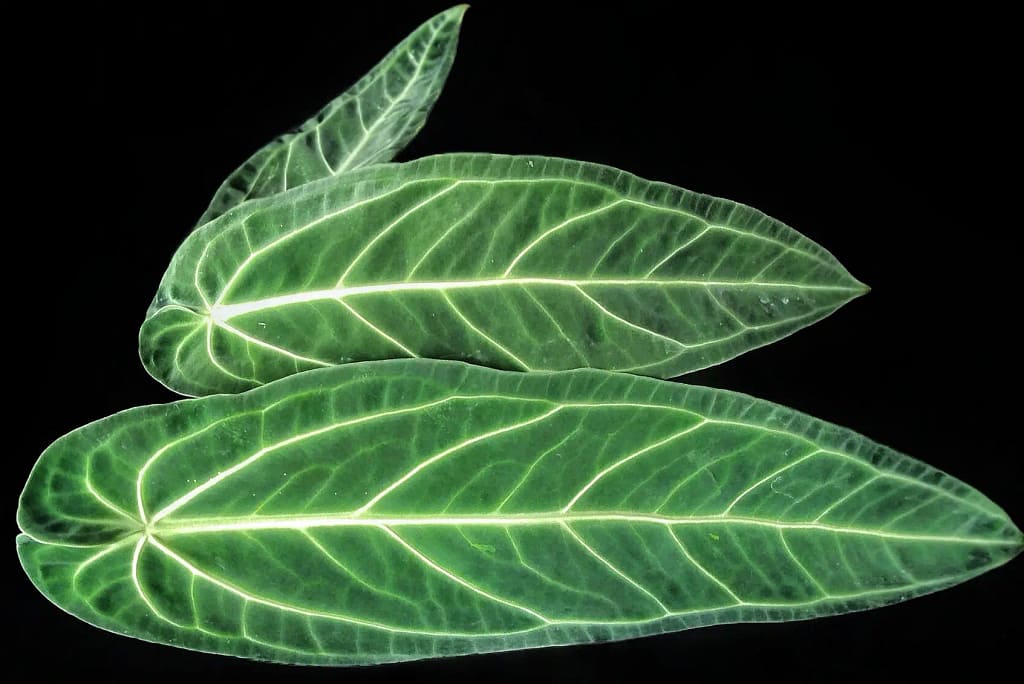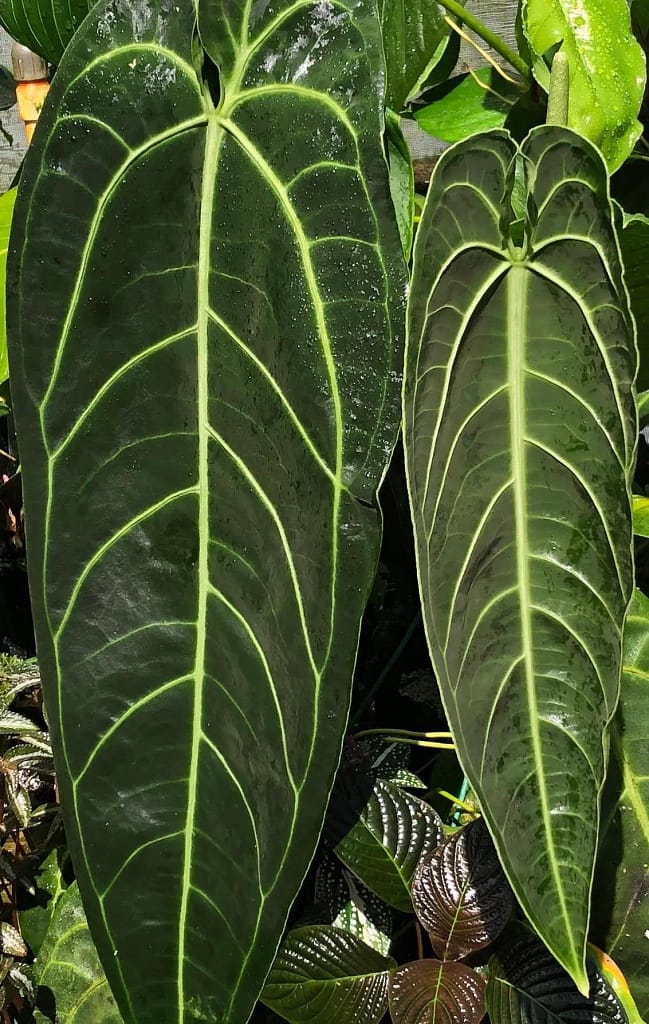Anthurium warocqueanum is an exotic, beautiful, and rare species of Anthurium native to the jungles of Southern Mexico. This genuinely unique tropical plant is often referred to as ‘Painted feather’ due to its eye-catching foliage spotted with flecks of pink, cream, and green that form delicate patterns across its velvety leaves. Known for its elegant appearance, staying relatively small and low-maintenance, this
Anthurium is highly sought after, and rightly so. Anthurium warocqueanum grows best in high humidity, partial shade, and steadily warm temperatures. Its natural habitat includes moss-laden trees, jungle clearings and gullies. Its soil should be well-draining and have good aeration; a mix of fertilizer-rich potting soil, perlite, and peat will allow for good drainage and help give the plant the nutrients it needs.

Tips for nurturing your Anthurium warocqueanum
Light
The Anthurium warocqueanum prefers bright indirect light, and it should be in a position that receives filtered sunlight for approximately 4-6 hours a day.
Temperature
This tropical plant loves warm temperatures; a temperature range of 18°C to 24°C (64°F to 75°F) is ideal. When outside this temperature range, the plant will start to suffer and should be moved to a more optimal area.
Soil type and drainage
As with all Anthuriums, this species needs a soil mix that’s acid, nutrient-rich, and free-draining. As these plants favour some moisture in the soil, it’s a good idea to add some organic matter to the potting mix. A combination of humus-rich soil, perlite, and peat will allow for good drainage and hold enough nutrients for the plant to thrive.
Humidity
Anthurium warocqueanum loves a high level of humidity. This can be achieved by misting the plant daily or placing it on a humidity tray.
Watering
As with all Anthuriums, water regularly to keep the soil moist, but be sure not to overwater. The soil should be allowed to dry out between watering, so getting the balance right is essential.
Toxicity
Anthuriums are toxic, so keeping these plants away from pets and children is important.
Fertiliser
It’s best to fertilize during the growing season (spring and summer) and give the plant a break from fertilizers during winter. Use a fertilizer specific to Anthuriums or a low-nitrogen general fertilizer diluted to half the suggested rate.

Troubleshooting pests, diseases and common problems
Anthuriums are generally relatively hardy and don’t suffer from many issues. However, if insect pests become a problem, treating them with a soapy solution will help eliminate them. Additionally, Anthuriums are prone to root rot, so make sure their soil is well-draining and not too wet. If the plant looks yellow and wilted, it may be an issue with the water or sunlight it receives.
Propagation
Anthuriums are usually propagated through stem cuttings. Cut a stem section off of the parent plant and let it callus over for a few days before replanting. Avoid getting the stem wet while it is callusing as this will increase the chances of fungus or rot.

Final Thoughts
Anthurium warocqueanum is an incredibly beautiful, rare, and tropical plant perfect for brightening any home. With its heat and humidity-loving characteristics, it’s best suited to a warm, humid environment, making it ideal for a bathroom or kitchen windowsill. This tropical beauty will reward you with its unique and exotic foliage, adding exotic charm to your home.
